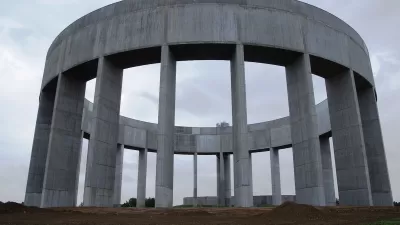“I have always thought that design can be a form of social activism,” says Don Meeker, environmental graphic designer and co-creator of “Clearview” typeface. This small but radical quotation was buried in an article from the 8.12.07 NY Times Sunday magazine (http://www.nytimes.com/2007/08/12/magazine/12fonts-t.html) on the redesign of highway sign typeface. Meeker, James Montalbano, and a team of collaborators understood that it was the design of highway signage that was contributing to highway fatalities. They applied an understanding of human psychology and function to the solution of a “civic issue.” Radical idea. It’s called Universal Design. Or social activism.
"I have always thought that design can be a form of social activism," says Don Meeker, environmental graphic designer and co-creator of "Clearview" typeface. This small but radical quotation was buried in an article from the 8.12.07 NY Times Sunday magazine (http://www.nytimes.com/2007/08/12/magazine/12fonts-t.html) on the redesign of highway sign typeface. Meeker, James Montalbano, and a team of collaborators understood that it was the design of highway signage that was contributing to highway fatalities. They applied an understanding of human psychology and function to the solution of a "civic issue."
Radical idea. It's called Universal Design. Or social activism.
For at least 40 years, design has been cowering in the wings, marginalized as an effete activity engaged in, or encountered by, a shrinking number of professionals and elites. Design has also assumed the "role of a proper noun," according to the editors of Good magazine (www.goodmagazine.com) in their first anniversary issue devoted to design. It is something to be purchased and collected. They suggest that "the word is much more exciting as a verb, the act of tackling real problems and finding elegant solutions."
This prosaic definition of design as problem solving may be true enough - we have a lot of problems to be solved – but the potential is far more interesting. Designers take a concept – often something that has never before been imagined - and turn it into something tangible, understandable and usable.
An exhibition currently at the Cooper-Hewitt, National Design Museum called Design for the other 90% (http://other90.cooperhewitt.org/) displays a wide range of ideas from designers all over the world. They are low-cost solutions for access to life necessities that only 10% of the world's population can take for granted: food and water, energy, health, education, trading, and mobility. Often co-created with the end user, these designs anticipate a socially, economically, and environmentally sustainable future.
If we design a world where environments, communication systems, and objects are usable by old and young alike, by people with visible and invisible disabilities, by people who speak myriad languages, by rich and poor, isn't that the embodiment of an inclusive, open, and democratic society?

Alabama: Trump Terminates Settlements for Black Communities Harmed By Raw Sewage
Trump deemed the landmark civil rights agreement “illegal DEI and environmental justice policy.”

Planetizen Federal Action Tracker
A weekly monitor of how Trump’s orders and actions are impacting planners and planning in America.

The 120 Year Old Tiny Home Villages That Sheltered San Francisco’s Earthquake Refugees
More than a century ago, San Francisco mobilized to house thousands of residents displaced by the 1906 earthquake. Could their strategy offer a model for the present?

Indy Neighborhood Group Builds Temporary Multi-Use Path
Community members, aided in part by funding from the city, repurposed a vehicle lane to create a protected bike and pedestrian path for the summer season.

Congestion Pricing Drops Holland Tunnel Delays by 65 Percent
New York City’s contentious tolling program has yielded improved traffic and roughly $100 million in revenue for the MTA.

In Both Crashes and Crime, Public Transportation is Far Safer than Driving
Contrary to popular assumptions, public transportation has far lower crash and crime rates than automobile travel. For safer communities, improve and encourage transit travel.
Urban Design for Planners 1: Software Tools
This six-course series explores essential urban design concepts using open source software and equips planners with the tools they need to participate fully in the urban design process.
Planning for Universal Design
Learn the tools for implementing Universal Design in planning regulations.
Clanton & Associates, Inc.
Jessamine County Fiscal Court
Institute for Housing and Urban Development Studies (IHS)
City of Grandview
Harvard GSD Executive Education
Toledo-Lucas County Plan Commissions
Salt Lake City
NYU Wagner Graduate School of Public Service






























